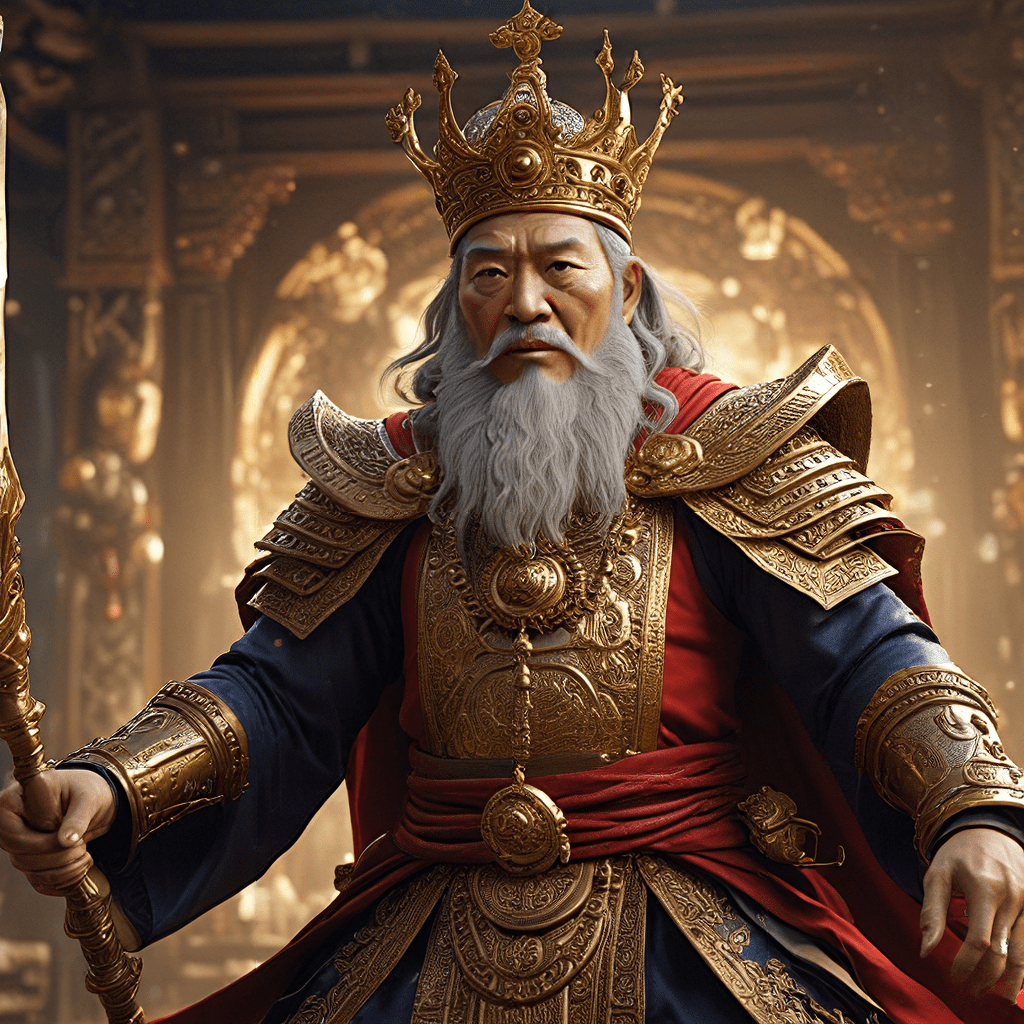King Suro: The Legendary Founder of Geumgwan Gaya
King Suro is a legendary figure in Korean history, credited with founding the ancient kingdom of Geumgwan Gaya, one of the most influential early kingdoms in the Korean peninsula. While historical evidence suggests that Geumgwan Gaya existed, the details surrounding King Suro and his reign are shrouded in myth and legend.
The Legendary Origins of King Suro
The story of King Suro begins with his miraculous birth. According to legend, his mother, Queen Geumgwan, was a powerful and benevolent ruler of the Geumgwan tribe. After a long wait for an heir, the Queen prayed for divine intervention, resulting in a celestial being descending from heaven. This being, disguised as a human, impregnated Queen Geumgwan. The tale of his birth is a testament to the belief in divine intervention and the importance of a ruler's connection to the celestial realm in ancient Korean society.
The Mythical Birth of King Suro
As the legend goes, King Suro was born from a golden egg in the heart of a sacred lotus flower. The arrival of the divine child was celebrated with a grand feast and rituals to honor the gods. The egg contained six golden siblings, each representing a different aspect of the divine, symbolizing the future power and prosperity of Geumgwan Gaya. This story showcases the importance of the divine in shaping the destiny of both the King and the kingdom, highlighting the significance of mythology in ancient cultures.
The Heavenly Wife: Queen Hwang Ok-jeong
King Suro, after his ascension to the throne, received a divine blessing in the form of a beautiful princess named Hwang Ok-jeong, sent from heaven. She was chosen by the deities to be Suro's wife and queen. The legend weaves this celestial marriage as a reflection of the divine favor bestowed upon King Suro, signifying a sacred union and the blessings of the gods on the newly established Geumgwan Gaya. The arrival of Queen Hwang Ok-jeong symbolizes the connection between the earthly and divine realms, further strengthening the kingdom's legitimacy and importance.
The Founding of Geumgwan Gaya
King Suro, with the support of his heavenly wife and the divine mandate, established the kingdom of Geumgwan Gaya in 42 AD. He is credited with uniting the tribes in the region, instilling a sense of unity and common purpose. His reign saw economic prosperity, cultural advancement, and a flourishing of the arts. The kingdom's location in the heart of the Korean peninsula allowed it to become a major trade center, connecting the peninsula with other regions within the Korean peninsula.
The Six Golden Eggs: The Foundation of Gaya’s Lineage
The legend of the six golden eggs not only represents the divine origin of the kingdom but also emphasizes the importance of lineage and its role in the kingdom's foundation. The six siblings from the golden egg emerged as the founders of the six major clans of Geumgwan Gaya, each playing a significant role in the kingdom's governance, military, and social structure. This story emphasizes the interconnectedness of the clans and their shared lineage, a key element in maintaining unity and stability within the kingdom. The legend of the golden eggs continues to be a source of pride and national identity for the descendants of the six clans and their role in the formation of the Gaya confederation.
Historical Significance of the Legend
The legend of King Suro is not just a historical account, but a reflection of the values and beliefs of the ancient Korean people. It underscores the importance of divine intervention in the creation of a nation, the reverence for ancestors, and the significance of lineage in shaping a kingdom's destiny. This legend serves as a powerful symbol of national identity, reminding the Korean people of their common origins, shared history, and cultural heritage. The story of King Suro and his heavenly wife, Queen Hwang Ok-jeong, fosters a sense of pride in the Korean people and reinforces their connection to their past, particularly in the context of the Gaya confederation.
Theological Interpretations of the Legend
The legend of King Suro, born from a golden egg, is often interpreted through the lens of Korean mythology and ancient religious beliefs. The golden egg symbolizes the divine origin of the kingdom and its connection to the celestial realm. The emergence of six siblings from the egg signifies the importance of lineage and its role in shaping the kingdom's destiny. The heavenly wife, Queen Hwang Ok-jeong, represents the blessings of the gods and the sacred union between the divine and the human. These elements within the legend reflect the ancient Korean belief in the interconnectedness of the human and the divine, emphasizing the importance of divine intervention and the influence of the celestial on the human world.
Archaeological Evidence and Theories
While the legendary aspects of King Suro's life are firmly rooted in mythology, archaeological evidence suggests that Geumgwan Gaya did indeed exist. Excavations have unearthed remnants of ancient cities, fortified settlements, and burial sites, confirming the existence of a flourishing civilization during the Gaya period. While historical records mention a king named Suro, there is no firm evidence to support the details of his birth, marriage, or reign. However, the legend of King Suro is still cherished as a powerful symbol of the Gaya confederation and its enduring influence on Korean culture and history.
The Evolution of the Legend Over Time
Over time, the legend of King Suro has undergone various transformations and interpretations. Throughout the centuries, it has been adapted, embellished, and reinterpreted to reflect changing social and political contexts. The legend has served as a source of inspiration for artists, writers, and historians, shaping the portrayal of the Gaya period in Korean literature and art. Today, the legend of King Suro continues to be a powerful reminder of the enduring influence of ancient Korean mythology and its impact on national identity.
The Legacy of King Suro and Geumgwan Gaya
The legacy of King Suro and Geumgwan Gaya lives on in the cultural landscape of Korea. The kingdom's influence can be seen in the architectural styles, artistic traditions, and cultural practices of the Korean people. The legend of King Suro remains an integral part of Korean folklore, inspiring countless stories, songs, and poems. The story of King Suro and his kingdom continues to be a source of pride and national identity for the Korean people, reminding them of their rich history and their connection to the ancient Gaya confederation.
FAQ
1. What evidence supports the existence of King Suro?
While the details of King Suro's life are shrouded in legend, archaeological evidence suggests that Geumgwan Gaya did exist. However, no concrete evidence confirms the specific details of King Suro's birth, marriage, or reign.
2. How did the legend of King Suro influence Korean culture?
The legend of King Suro, with its emphasis on divine intervention, lineage, and cultural heritage, has deeply shaped Korean culture. It serves as a foundation for national identity and inspires stories, songs, and poems that continue to be cherished by the Korean people.
3. What is the significance of the six golden eggs in the legend?
The six golden eggs symbolize the divine origins of the kingdom and the importance of lineage in shaping Gaya's destiny. They also represent the six major clans of Geumgwan Gaya, each playing a significant role in the kingdom's governance and development.
4. What is the connection between the legend and the Gaya period in history?
The legend of King Suro is intertwined with the history of the Gaya period. While historical evidence suggests Geumgwan Gaya did exist, the legend provides a mythical framework for understanding the kingdom's origins, the role of divine intervention, and the significance of lineage in its establishment.




